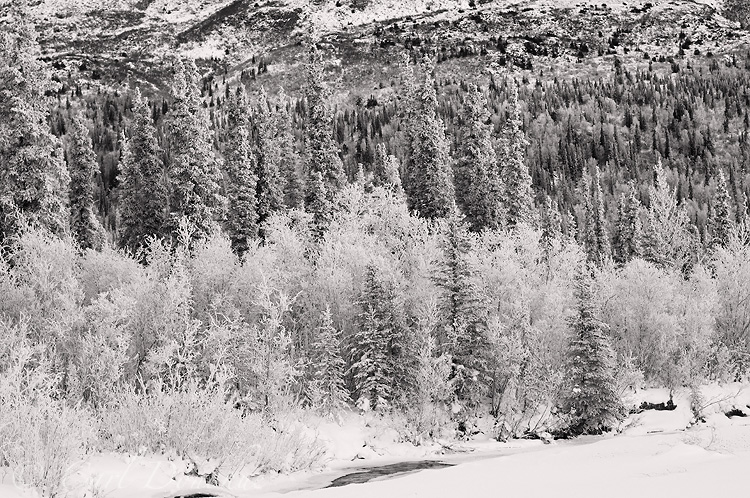I love the northside of the park in the dead of winter. It depicts, in a very emphatic manner, the phrase “dead of winter”. Being on the north side of the Wrangell Mountain Range, the sun doesn’t get high enough to poke over the skyline but for the briefest moments, and peers softly into the valley. Then it subsides back down behind those improbable mountains and the dusky, cool feel of twilight returns.
As a photographer, the southside of the range is the place to be in winter; the alpenglow on the face of Mt. Blackburn alone is every landscape photographers’ dream. The northside of the park doesn’t get that. Not in the winter. In the depths of old man winter, the northside is in shadow much of the time, particularly in close to the big mountains, or in the narrower valleys.
But the open water along streams and some rivers, such as Jack Creek here, puts more moisture into the air, and that moisture turns to incredible hoar frost, coating the forest and creating a stark, almost desparately potent austerity.
This feeling really gives me a sense of what I might call ‘real Alaska’ in the winter. It’s not just cold, and white, and big; but severe and almost grim. That’s what I think of when I think of Alaska in the winter. It’s not something to take lightly, or something to play around with at all. There’s a very deep seriousness to it, as we’re acutely aware of how fragile our existence is in its grip.
It’s a profound experience, which is why I so enjoy this part of the park in the shortest days of the year.
A black and white photo of the boreal photo in Wrangell-St. Elias National Park and Preserve, wintertime, Alaska.
